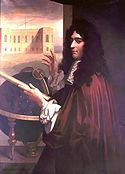Three Red Spots Mix it Up on Jupiter
The time series shows the passage of the "Red Spot Jr." in a band of clouds below (south) of the Great Red Spot (GRS). "Red Spot Jr." first appeared on Jupiter in early 2006 when a previously white storm turned red. This is the second time, since turning red, it has skirted past its big brother apparently unscathed.
But this is not the fate of "baby red spot," which is in the same latitudinal band as the GRS. This new red spot first appeared earlier in 2008. The baby red spot gets ever closer to the GRS in this picture sequence until it is caught up in the anticyclonic spin of the GRS. In the final image the baby spot is deformed and pale in color and has been spun to the right (east) of the GRS. (Amateur astronomers' observations confirm that this is the baby spot that migrated around the GRS.) The prediction is that the baby spot will now get pulled back into the GRS "Cuisinart" and disappear for good. This is one possible mechanism that has powered and sustained the GRS for at least 150 years.
These three natural-color Jupiter images were made from data acquired on May 15, June 28, and July 8, 2008, by the Wide Field Planetary Camera 2 (WFPC2). Each one covers 58 degrees of Jovian latitude and 70 degrees of longitude (centered on 5 degrees South latitude and 110, 121, and 121 degrees West longitude, respectively).Relevante Bilder
Relevante Artikel
Großer Roter FleckDer Große Rote Fleck ist ein auffälliger und langlebiger Sturm in Jupiters Atmosphäre. Meteorologisch gesehen ist er ein Hochdrucksystem auf der Südhalbkugel des Planeten. Dieses System erzeugt einen antizyklonalen Sturm, welcher der größte im Sonnensystem ist. Er befindet sich in der südlichen Tropenzone und ist etwa eineinhalb mal so breit wie der Durchmesser der Erde. Die Windgeschwindigkeiten betragen bis zu 680 km/h. Erste Beobachtungen eines Flecks auf Jupiter stammen aus der Zeit von 1665 bis 1713. Es ist unklar, ob es sich damals um denselben Sturm handelte wie der seit dem 19. Jahrhundert beobachtete Große Rote Fleck. Sollte dies zutreffen, dann existiert er seit über 350 Jahren. Erst 1831 wurde er das nächste Mal von Samuel Heinrich Schwabe beobachtet, und zwischen diesem Zeitpunkt und 1878, als die kontinuierliche Beobachtung begann, wurden 60 Beobachtungen aufgezeichnet. Ab den 1970er Jahren bekam Jupiter Besuch von etlichen Raumsonden wie Voyager, Galileo, Cassini und Juno, die detaillierte Aufnahmen und weitere Messungen des Sturms durchführen konnten. .. weiterlesen




















